Are Polar Waters Navigable – 10 Things You Should Know
Sailing across our vast and unpredictable oceans poses an ever-present peril. What appear to be calm seas can swiftly give way to roiling tempests, as gentle winds can escalate into powerful gusts, highlighting the ever-changing nature of maritime journeys.
To ensure safe and secure travel in the face of such unpredictability, mariners rely on established protocols, navigational aids, and specialized technologies. However, the narrative takes a dramatic turn when vessels venture beyond familiar horizons and venture into the cold at the poles. The North and South Poles, surrounded by the Arctic Ocean and Antarctica, respectively, encompass extensive icy landscapes.
In the Arctic region near the North Pole, a labyrinth of ever-shifting ice sheets characterizes the environment. Meanwhile, at the South Pole, located on the continent of Antarctica, the landscape is marked by its extreme conditions, with land concealed beneath an ice layer nearly three miles thick in certain areas. The average winter temperature in the Arctic hovers around minus 22°F, while the South Pole has witnessed temperatures as low as a bone-chilling minus 129°F.
The extreme weather conditions raise questions about the necessity and feasibility of navigating ships through icy terrains. Let’s look at some of these crucial facts regarding maritime navigation in polar waters.
Expanding maritime activity in Polar regions
Shipping operations in polar regions have long been challenging and limited in volume due to their inherent complexities. However, recent climate change-induced reductions in ice cover have made maritime activities in these areas increasingly feasible.
The attraction of plentiful natural resources, including oil, gas, and metals, has spurred exploratory efforts, driving the flow of offshore operations engaged in the exploration and extraction of oil and gas. Simultaneously, the appeal of shorter polar routes, such as the Northern Sea Route, lures shipping companies involved in international trade, providing substantial time and fuel savings compared to traditional Suez Canal or Panama Canal routes.
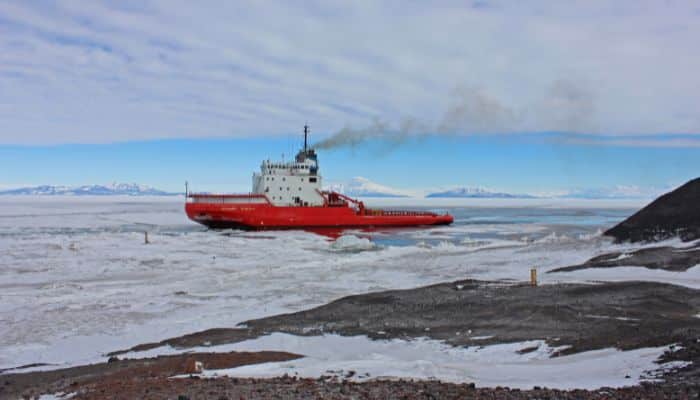
Amid the escalating impact of climate change, the polar regions have become unique hubs for scientific research, particularly in the fields of marine biology and glaciology, drawing numerous research vessels each year. Furthermore, the appeal of polar expedition travel has fueled a rapid expansion of cruise ship tourism in both the Arctic and Antarctic, enabling easier access to stunning landscapes and wildlife.
Non-navigable ice sea
The polar waters are known for their extensive sea ice coverage, particularly during winter. Sea ice is an expanse of frozen seawater that gently rests upon the ocean’s surface. In the Arctic, sea ice expands into surrounding seas and coastlines during winter, while in contrast, Antarctic sea ice primarily forms around the massive landmass of Antarctica.
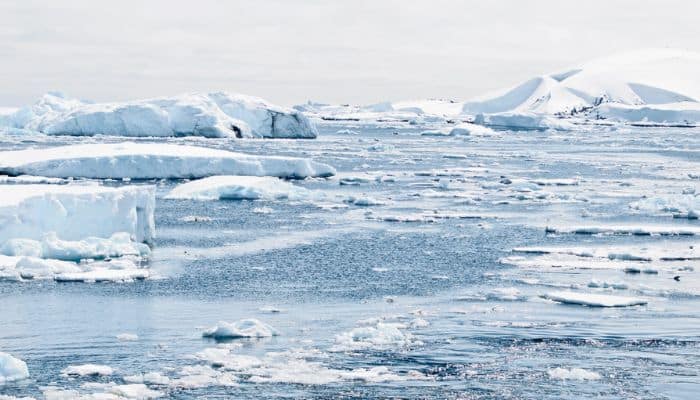
The presence of this icy surface varies throughout the year in response to the changing seasons, leaving experienced masters with up-to-date information on ice conditions helpless at times. While thickness varies significantly within both regions, Antarctic sea ice is typically 1 to 2 meters thick, while Arctic sea ice is typically 2 to 3 meters thick, with some areas featuring ice up to 5 meters in thickness.
The presence of thick sea ice often makes navigation difficult or even impossible for most vessels, as it can damage ships and hinder their progress, leading to delays and increased fuel consumption.
The threat of icebergs
As mentioned, navigating polar waters presents a unique set of challenges and risks that differ significantly from conventional open-water sailing. Amid the ever-changing weather conditions, ice remains a persistent obstacle for shipping in these frigid regions. Icebergs in the Antarctic and Arctic exhibit a wide size range, with Antarctic icebergs typically surpassing their Arctic counterparts in dimensions. Antarctic icebergs can often extend several kilometres in length, with tabular icebergs often exceeding 10 kilometres in dimension.

The largest recorded iceberg spotted in the region measured a staggering 335 x 97 kilometres, covering an expansive 31,000 square kilometres. Arctic icebergs, usually non-tabular, can also be substantial, frequently reaching heights of up to 70 meters above the water, with the largest on record towering 168 meters above sea level, albeit with irregular shapes. Although radar systems and satellite data aid in iceberg detection, these icy behemoths, regardless of their form and size, continue to pose a potential threat to vessels in various ways.
Harsh weather conditions
Beyond the challenges of sea ice and icebergs, polar regions present maritime operators with extreme weather conditions, including powerful winds, towering waves, storms, and dense fog. These climates give rise to meteorological phenomena such as cyclones, anticyclones, and polar lows.
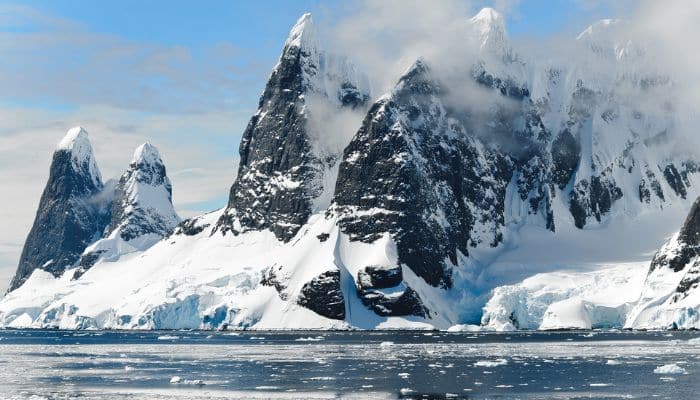
In the Arctic, polar lows bring wind speeds averaging around 80 kilometres per hour, occasionally reaching hurricane strength at 103 kilometres per hour. In Antarctica, winter winds routinely exceed 100 mph. This harsh weather not only affects ship systems but also impacts the crew’s well-being.
Moreover, with the lowest winter temperatures on Earth, these frigid winds result in sea spray icing, adding complexity to maritime operations. Icing from sea spray can lead to operational difficulties, posing a risk of catastrophic stability losses, including capsizing, severe rolling and pitching, and potential topside flooding.
Innovative ship design
In the world of polar maritime operations, unique challenges demand innovative solutions. Unlike vessels navigating traditional sea routes, polar ships undergo specialized design, utilize distinct materials, and employ unique equipment to ensure safe and reliable journeys in these extreme conditions. With their harsh ice-dominated environments, polar waters necessitate vessels equipped with powerful engines capable of efficiently propelling them through icy expanses. Moreover, these ships must possess the structural strength to withstand and breakthrough encroaching ice.
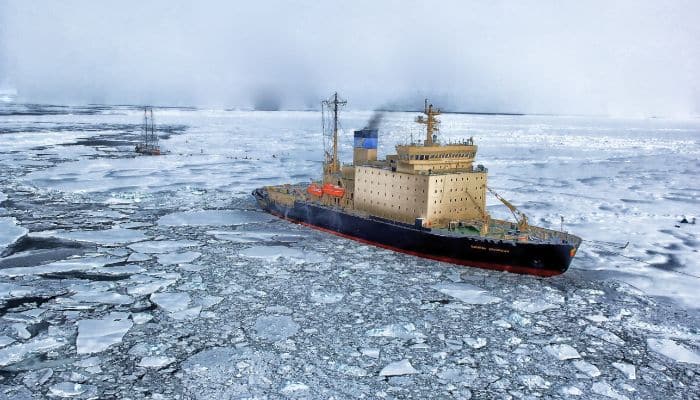
They face a variety of ice-related challenges, including the impact of ice on the ship’s bow, the pressure exerted on the hull, and the added stress of navigating narrow channels or executing turns. As a result, these polar vessels require ice-strengthened hulls, reinforced bows, and sophisticated cold resistance, heating, and insulation systems to safeguard their equipment and machinery from freezing.
These measures are crucial for the vessels to thrive and ensure operational integrity in the frigid waters of the polar regions. In the past, different Classification Societies maintained their individual criteria for ships operating in polar waters, often referred to as Polar Class vessels.
However, in 2008, the International Association of Classification Societies (IACS) introduced a unified set of requirements for Polar Class ships. These standards were established to ensure that such vessels are purpose-built and well-equipped to meet the rigorous demands of navigating in polar regions.
Technology-assisted navigation
Navigating ships in polar seas demands additional effort compared to more conventional navigation environments. Icebreakers, a distinct class of vessels engineered to conquer even the thickest ice, are instrumental in assuring ships secure and dependable navigation in polar regions. However, the polar regions present unique challenges as they are often inadequately charted or entirely uncharted in some areas, making it risky to rely heavily on chart data and standard navigation tools for safe passage.
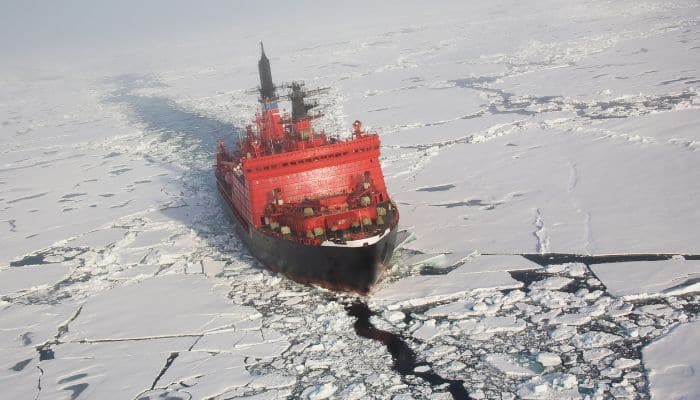
Furthermore, the Arctic and Antarctic waters frequently suffer from poor visibility, even in daylight, and are limited in traditional navigational aids like buoys and lighthouses due to their geographical constraints. To address these challenges, vessels intended for polar waters are equipped with a suite of advanced navigation and communication equipment.
Navigators increasingly turn to electronic charts and radar systems for guidance, and satellite technology, including GPS, plays a crucial role in ensuring accurate positioning and route planning. These technological solutions provide navigators with detailed visualizations of ice conditions and offer enhanced navigation options, enabling ships to chart the most optimal routes through challenging ice conditions.
Role of experienced crew
In the realm of polar navigation, electronic tools can only provide limited assistance. Seasoned crew members are the often-overlooked heroes aboard vessels traversing these frigid waters. Ice navigation, experts emphasize, is a skill acquired through formal training at navigation school and refined over years of hands-on experience. When it comes to tackling the inherent risks of ice – which include potential damage and delays – there is no substitute for the expertise and commitment of experienced crew members.

Their profound understanding of the unique challenges in these regions, spanning from navigating treacherous ice conditions to managing unpredictable weather and specific routes, equips them to make well-informed decisions and execute tactical plans.
Proficiency in operating and maintaining specialized equipment and technology designed for polar navigation is also essential for crew members to ensure secure and safe travel. Simultaneously, working in cold temperatures can be physically demanding, and only a seasoned crew can endure the journey while maintaining their physical and mental well-being.
Poor infrastructure
The absence of vital infrastructure in polar regions raises concerns for vessels navigating these waters. The lack of developed ports, adequate search and rescue capabilities, and other essential infrastructure elements creates obstacles for commercial navigation in the region. With limited port facilities available, ships must carry extra spare parts for critical equipment in case of damage and maintain ample food and supplies for crew members to account for potential delays.
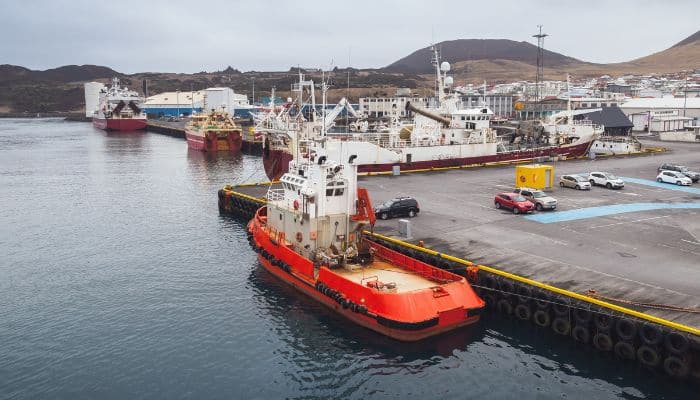
These underdeveloped infrastructures can exacerbate the risks associated with incidents, potentially transforming minor issues into serious casualties. Such delays in providing assistance not only endanger the vessel and its crew but also pose environmental risks. In regions outside the established commercial shipping routes, vessels may find themselves in even greater isolation, with rescue operations potentially taking weeks to arrive.
Environmental concerns
Temperatures in the polar region are rising at a rate twice as fast as global averages, leading to the disappearance of the permanent polar ice cap at a rate of approximately 10 per cent every decade. Shipping activities in the region have increased in the recent past as the ice melts, posing several environmental threats to the area. With more vessels navigating these icy waters, the risks of incidents like heavy fuel oil (HFO) spills, air and underwater noise pollution, and the potential for increased icebreaking significantly.
The release of oil into the marine environment, whether through accidental discharge or illicit dumping, can be particularly worrisome. In polar regions, spilt oil can become entrapped in ice, creating a persistent threat to the ecosystems and wildlife that call these areas home. Improper waste disposal practices and the discharge of sewage and graywater from ships further compound the environmental challenges. These actions have the potential to contaminate the pristine marine environment, jeopardizing the delicate balance of these unique ecosystems.
Regulations and Polar Code
As the shipping industry continues to expand its presence in polar waters, the task of ensuring the safe movement of vessels and addressing environmental issues becomes more pressing than ever. These enduring concerns have played a pivotal role in shaping the establishment of numerous regional prevention and response measures, with a significant milestone being the International Maritime Organization’s (IMO) International Code for Ships Operating in Polar Waters, commonly referred to as the Polar Code.
This comprehensive framework encompasses a wide spectrum of aspects, spanning ship design, construction, equipment, operational procedures, training protocols, search and rescue capabilities, and environmental protection considerations, all of which are critical for ships navigating the challenging and unforgiving waters surrounding the Earth’s polar regions.
Implemented in 2017, the Polar Code mandates that ships planning to operate in the designated Antarctic and Arctic waters must seek a Polar Ship Certificate. This certificate classifies vessels into Categories A, B, or C, depending on their intended operations in the region.
Nevertheless, there is an emerging consensus among researchers that the code requires adjustments to align with the evolving trends in Arctic shipping. This includes the shift from seasonal shipping to year-round traffic, particularly during winter when ice and weather conditions become more variable and demanding.
You might also like to read-
- 10 Largest Fjords In The World
- 10 Best Great Lakes Ship Tracker Tools
- 10 Gulf of Martaban Facts You Might Not Know
- 12 Gulf Of Mannar Facts You Might Not Know
- 10 Celtic Sea Facts You Should Know
Disclaimer :
The information contained in this website is for general information purposes only. While we endeavour to keep the information up to date and correct, we make no representations or warranties of any kind, express or implied, about the completeness, accuracy, reliability, suitability or availability with respect to the website or the information, products, services, or related graphics contained on the website for any purpose. Any reliance you place on such information is therefore strictly at your own risk.
In no event will we be liable for any loss or damage including without limitation, indirect or consequential loss or damage, or any loss or damage whatsoever arising from loss of data or profits arising out of, or in connection with, the use of this website.
Do you have info to share with us ? Suggest a correction
Disclaimer :
The information contained in this website is for general information purposes only. While we endeavour to keep the information up to date and correct, we make no representations or warranties of any kind, express or implied, about the completeness, accuracy, reliability, suitability or availability with respect to the website or the information, products, services, or related graphics contained on the website for any purpose. Any reliance you place on such information is therefore strictly at your own risk.
In no event will we be liable for any loss or damage including without limitation, indirect or consequential loss or damage, or any loss or damage whatsoever arising from loss of data or profits arising out of, or in connection with, the use of this website.
Latest Maritime Knowledge Articles You Would Like:
Subscribe To Our Newsletters
By subscribing, you agree to our Privacy Policy and may receive occasional deal communications; you can unsubscribe anytime.















